
Shipping containers are designed to lock together safely, and it all starts with a simple yet effective mechanism. The twistlock, a crucial component, is used to secure containers in place.
The twistlock has a unique design with a spring-loaded locking mechanism that allows for easy attachment and detachment. This makes it ideal for frequent use.
To ensure safe stacking, shipping containers are designed with a specific height-to-width ratio. This ratio is crucial to prevent containers from toppling over.
What Are Shipping Container Locks?
Shipping container locks are designed to secure the interlocking system of containers on ships. They are typically made of steel and come in different types, including twistlocks and container locks with lashing bars.
A twistlock is a type of lock that uses a twisting motion to secure the container in place. It's a popular choice for its ease of use and quick deployment.
Container locks with lashing bars are another common type of lock. They use metal bars to lash the containers together, providing added security.
The interlocking system of shipping containers relies on these locks to keep the containers stable and secure during transport.
Types of Locks
Shipping containers come with various types of locks to secure them together. The main types of shipping container twist locks are either vertical or horizontal.
Vertical twist locks are designed for stacking shipping containers, one on top of the other. Horizontal twist locks secure shipping containers side by side.
There are also different designs of twist locks, including dovetail style locks. These locks are meant for flat surfaces and can be welded or bolted into a metal surface with the base.
What Is a Lock?
A lock is essentially a mechanism that secures something in place, and in the case of shipping containers, it's mainly locked using twist locks.
Twist locks get their name from their mechanism, which involves rotating a lever to the right or left to lock or unlock the container.
These locks stay secured by the weight of the container, making them immovable when in transit on a ship, truck, train, or even installed as a container home.
There are different types of twist locks, including manual, semi-automatic, and fully automatic ones.
Types of
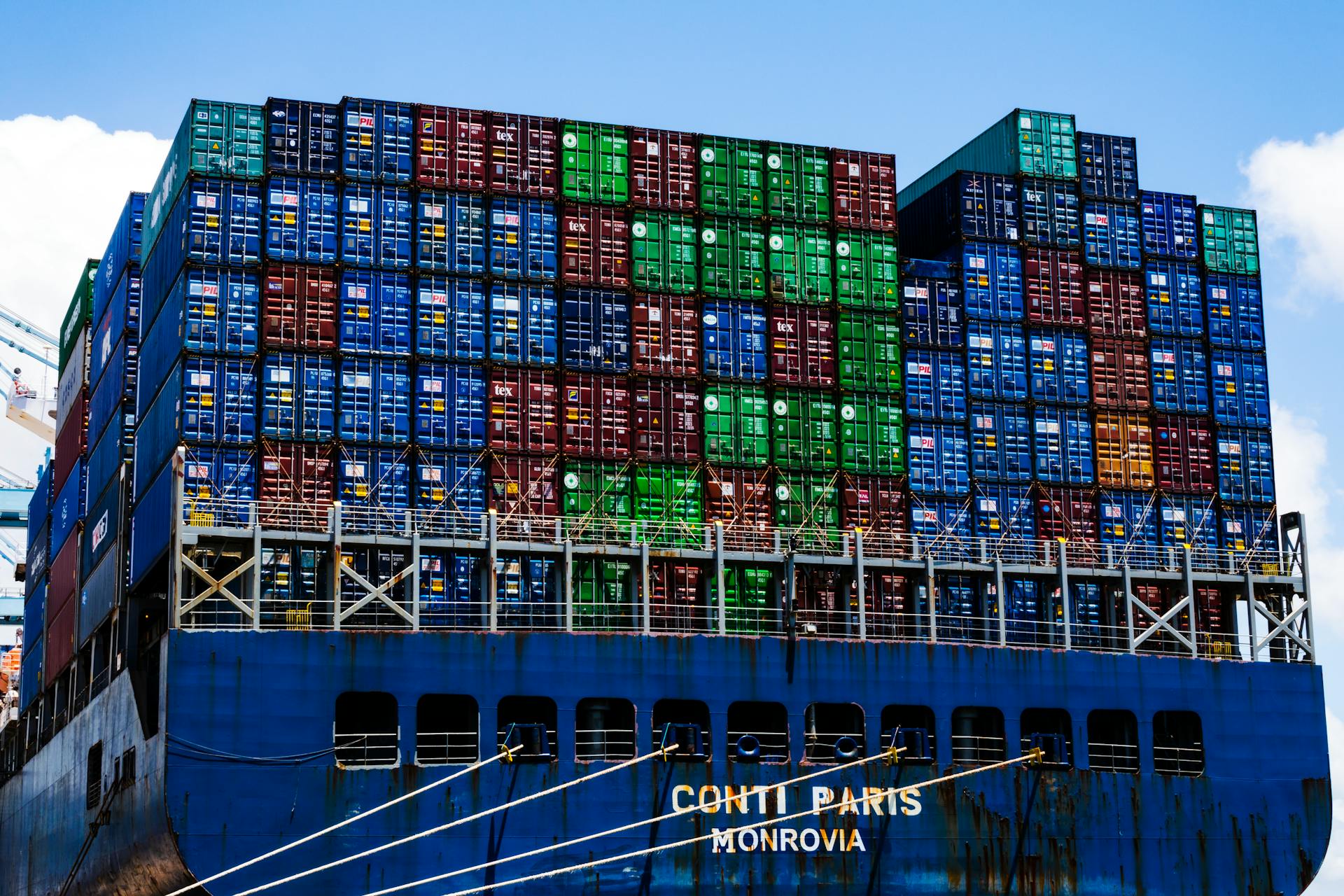
Types of locks for shipping containers include vertical and horizontal twist locks, which are used for stacking and securing containers side by side.
Vertical twist locks are specifically designed for stacking shipping containers, one on top of the other. They're a must-have for any shipping container setup.
Horizontal twist locks, on the other hand, secure shipping containers side by side, making them perfect for when you need to connect multiple containers.
Dovetail twist locks are a popular choice, allowing for either a vertical or horizontal connection. They're versatile and can be used in a variety of situations.
The dovetail design is particularly useful for stacking containers vertically, and it's also suitable for securing containers side by side.
Types of Caps
There are no types of caps mentioned in the article section facts. However, we can use a related example from Container Sales Group, which mentions being a women-owned business established in 1998.
How to Choose
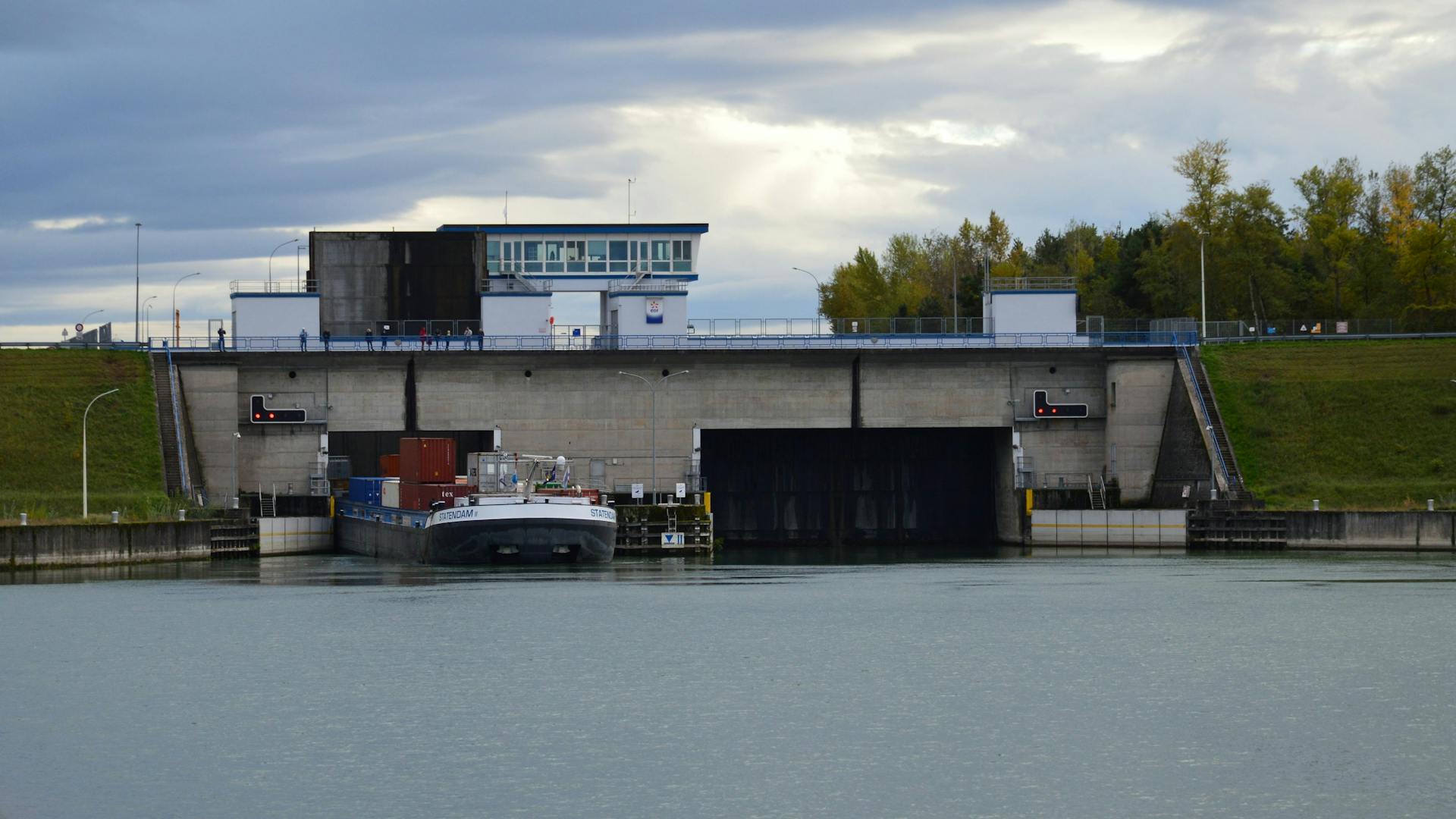
Choosing the right lock for your needs can be overwhelming, especially with the many types available. Consider the level of security you require, as some locks are more resistant to picking and tampering than others.
For example, high-security locks like the Abloy Protec and the Medeco X4 have anti-pick pins that make them extremely difficult to pick. These locks are often used in high-risk areas such as banks and government buildings.
Think about the type of door you're locking, as different locks are designed for specific types of doors. For instance, a deadbolt lock is ideal for exterior doors, while a mortise lock is better suited for interior doors.
Deadbolt locks, such as the Schlage B60, have a solid steel bolt that extends deep into the door frame, making them very secure. They're often used in homes and commercial buildings.
Consider the ease of use and maintenance when selecting a lock. Some locks, like the digital locks, have electronic keypads that can be programmed for multiple users.
Lock Installation
Installing twist locks on shipping containers is a relatively quick and easy process that should take only minutes to complete. The actual twist-lock installation is fast and easy, and can be done with just a few turns of the operating rods.
It's essential to work with a professional shipping container company, like Gateway, to ensure that the installation is done correctly and safely. Much planning goes into this, from preparing the ground surface to enough space for the crane to stack your containers.
Shipping containers must transport valuable, sometimes hazardous cargo over long distances and under unpredictable conditions, which is why twist locks are such an essential part of the shipping business. Twist locks are designed to keep containers securely in place.
A twist lock generally has a cone-shaped top that is inserted into the top or bottom Corner Casting and then rotated 90 degrees to "lock" in place. This is what keeps the containers from separating.
Lock Features and Options
Shipping container locks are designed to be symmetrical, allowing you to use them upside-down depending on your installation needs.
Twist locks should meet ISO standards, ensuring a safe and secure connection between containers.
All twist locks should be easy to assemble, making them a convenient option for shipping container owners.
Shock absorbers or other protections against wear and tear are a must-have feature in twist locks, extending their lifespan and preventing damage.
Bolt sizes and compression are other important specifications to consider when choosing a twist lock.
Lock Placement and Orientation
Side-by-side container locks can be installed in the side of the container, allowing for easy connection and stacking. This type of lock is often double-ended, with a cone shape that twists to lock into place.
The Bridge-fitting Clamp Locks, on the other hand, are designed to be placed in the corner posts of the containers, with a turn buckle bolt that has alternate threads.
You can secure your container to the ground using a Weldable twist lock, which can be welded to a steel plate cast into your slab or footing, or a Boltable twist lock, which can be bolted down to your slab or footing.
Stacked
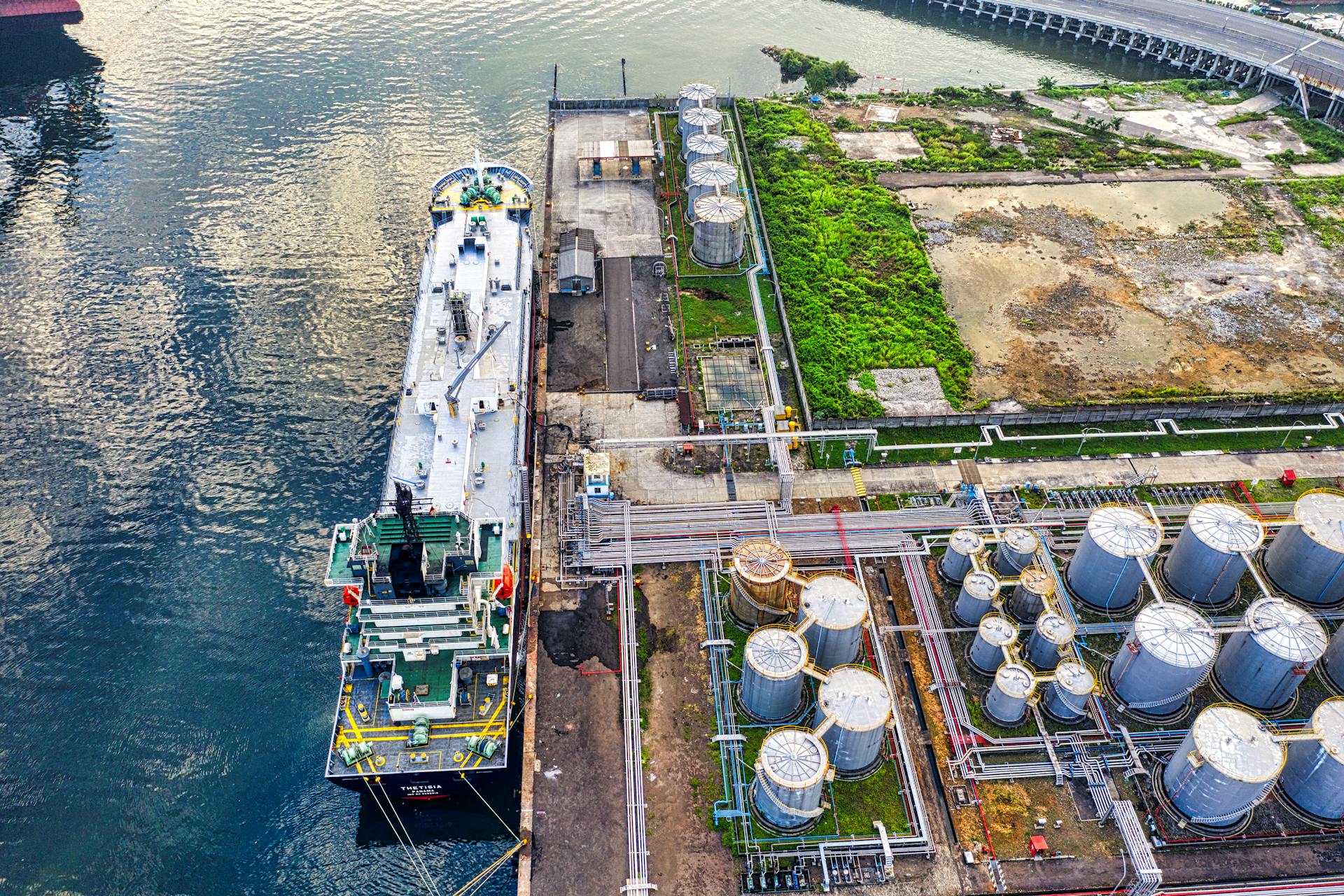
Stacked shipping containers require the right locks to secure them safely and efficiently. Vertical Twist Locks are designed for this purpose.
They come in three types: Double Ended Twist Locks, Dovetail Twist Locks, and Manuel Twist Locks For Chassis. Double Ended Twist Locks are used to stack two containers on top of each other, and can be manual, semi-automatic, or fully automatic.
Dovetail Twist Locks are designed for flat surfaces, and can be welded, bolted, or cemented onto any surface. This type of lock is ideal for containers with flat surfaces.
Manuel Twist Locks For Chassis are welded onto the chassis surface to secure the container for transportation. This lock provides a secure and stable connection between the container and the chassis.
Here are some key features of stacked shipping container locks:
These locks are designed to provide a secure and stable connection between stacked shipping containers, and can be chosen based on the specific needs of the user.
Side-by-Side
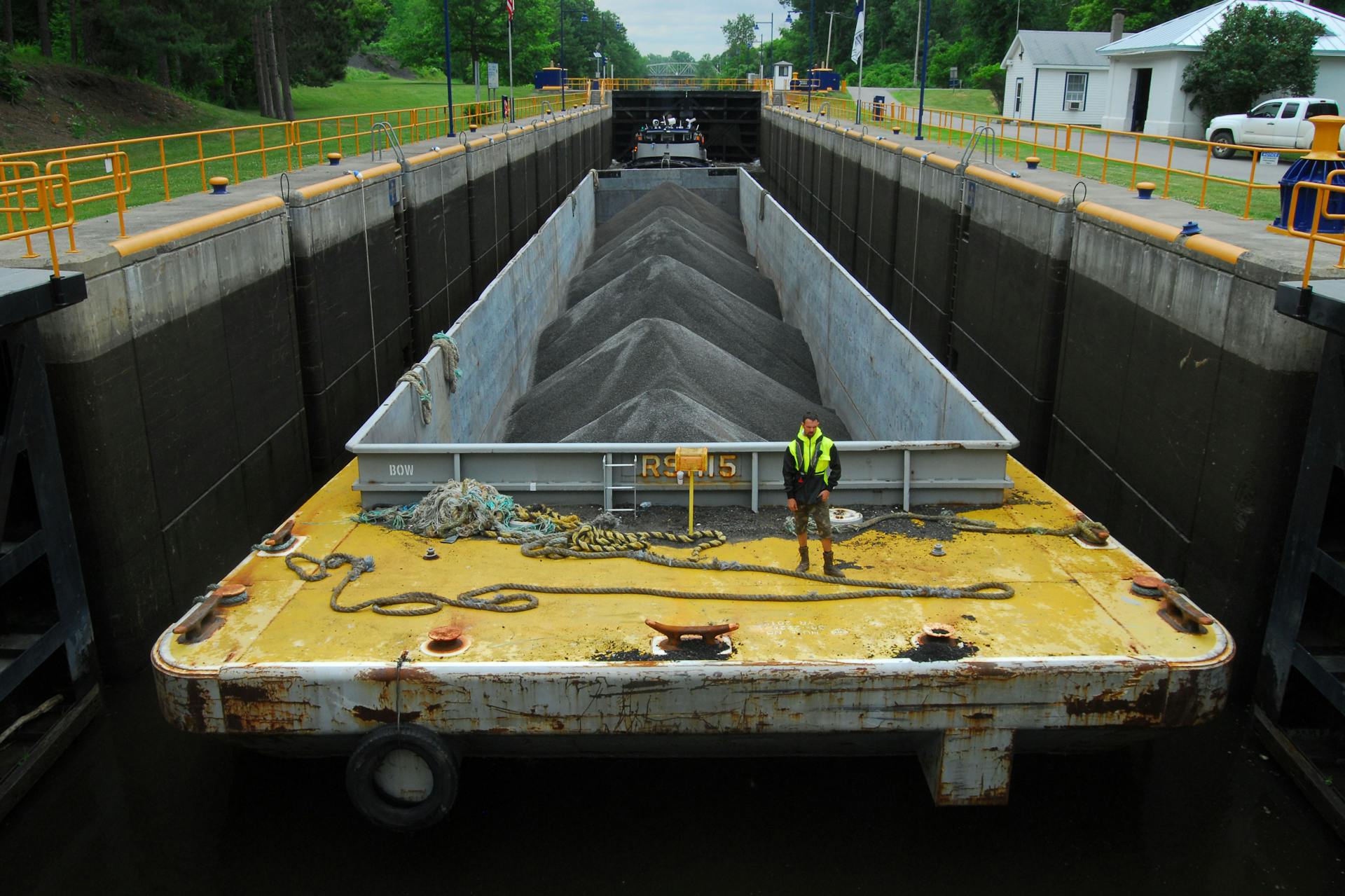
Side-by-Side connections are a common way to link shipping containers together. Horizontal Twist Locks are designed for this purpose, and they can't be used vertically.
These locks are double-ended, making them easy to use. Simply insert the cone shape into the side of the container and twist to lock.
To connect two containers side by side, insert the lock into the side of the first container and twist to lock. Then, connect the second container to the side of the first and lock it into place.
Here's a quick rundown of the steps for using Horizontal Twist Locks:
Bridge-fitting Clamp Locks are another option for connecting containers side by side. They have a turn buckle bolt with alternate threads, making them easy to use.
Ground Anchoring
You can secure your shipping container to the ground using various options. Our Weldable twist lock is a great choice, as it gets welded to a steel plate cast into your slab or footing.
The Boltable twist lock is another option, which gets bolted down to your slab or footing and the container lowered onto it. This method is straightforward and easy to execute.
You can also use our patented Side twist lock, which is placed in either the side or end hole (or both) of the Corner Castings and then bolted to the slab or footing. This is done after the container is in place, so you can easily position it first.
Lock Mechanisms
Shipping container twist locks come in three main types: manual, semi-automatic, and fully automatic. Each type has its own unique mechanism for securing containers together.
The manual twist lock requires you to manually move a lever handle to lock the containers in place, while the semi-automatic twist lock is spring-loaded and only needs a simple pull to lock the containers together. Fully automatic twist locks, on the other hand, automatically lock into place when stacked together.
Here are the key differences between the three types of twist locks:
Dovetail Style
The dovetail style of shipping container twist locks is a popular choice for its versatility. It allows for either a vertical or horizontal connection, making it a great option for stacking containers or placing them side by side.
Dovetail twist locks can be used on flat surfaces and can be welded or bolted into a metal surface with the base. This makes them a secure and stable option for heavy containers.
To use a dovetail style shipping container twist lock, simply place it into a neutral position, load the container on top, and shift to the lock position. The dovetail locks from right to left, making it easy to stack containers vertically.
This type of lock is perfect for securing shipping containers on the ground, and can be used in a variety of settings, from warehouses to construction sites.
Semi-Automatic
The semi-automatic shipping container twist lock is a convenient and secure option. It's similar to the manual twist lock, but with a spring-loaded mechanism that prevents accidental unlocking.
This lock features a spring that must be pulled to a neutral position before inserting the upper shipping container. The larger size of this lock offers greater surface area and stability.
Mytee Products offers two sizes of these semi-automatic locks, catering to different needs and applications. The semi-automatic twist lock is a reliable choice for those who want a hassle-free locking experience.
Stacking Pins
Stacking Pins can join shipping containers at a 90-degree angle, making them ideal for cantilevered designs or combining different sized containers.
These pins typically have a double-ended design that connects to any standard shipping container casting. Twist-lock pins are a type of stacking pin that provides extra stability for vertically stacked shipping containers.
Twist-lock pins are designed to support shipping containers and can be chosen based on the specific needs of your shipping container design.
How to Works
Lock mechanisms are designed to provide a secure way to lock and unlock doors, cabinets, and other objects. They work by using a combination of mechanical and sometimes electronic components to prevent unauthorized access.
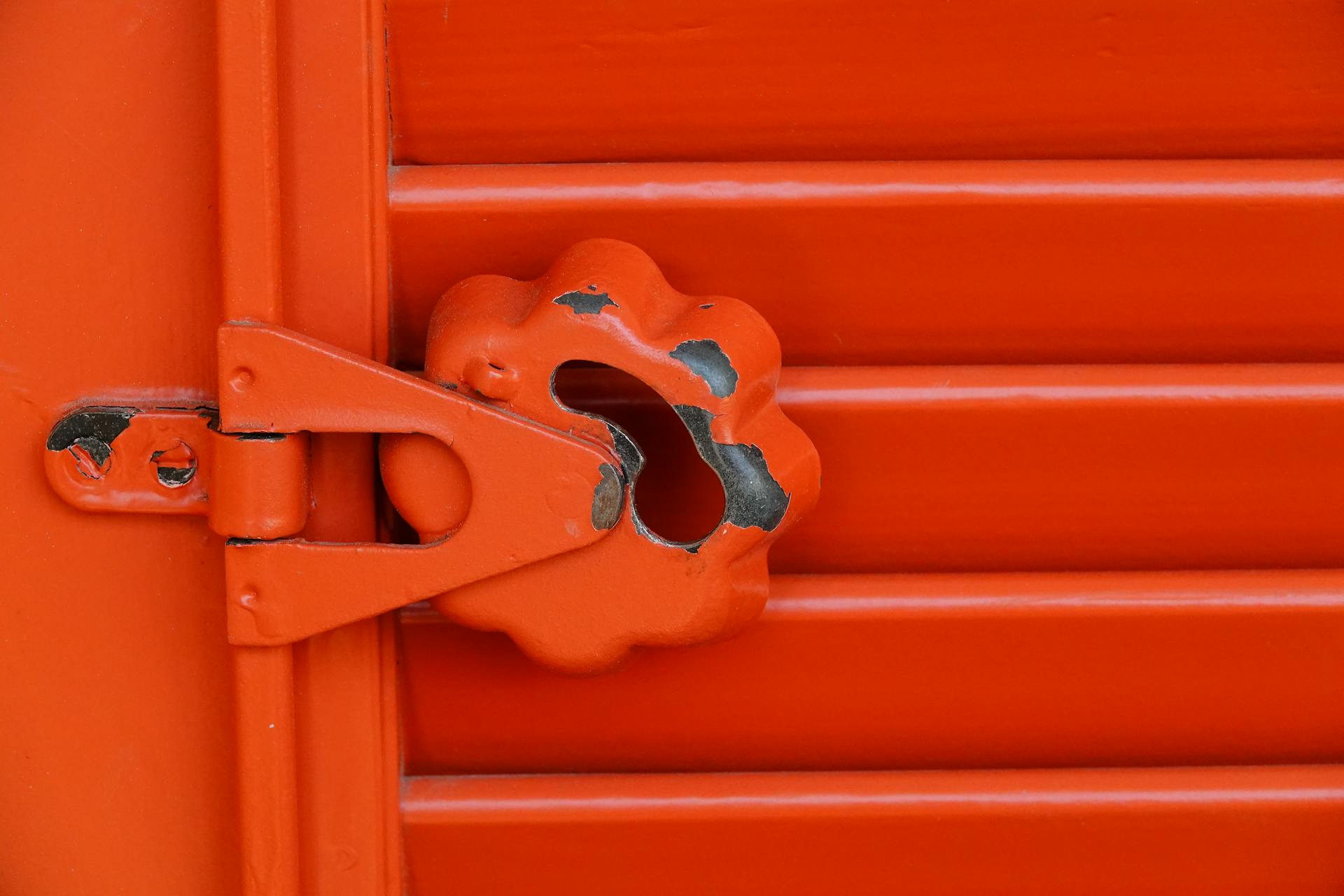
The most common type of lock mechanism is the pin tumbler lock, which uses a series of pins of varying lengths to prevent the lock from turning unless the correct key is inserted.
To understand how a pin tumbler lock works, it's essential to know that the pins are set to specific heights that correspond to the teeth of the key. When the correct key is inserted, the pins are lifted to the correct height, allowing the lock to turn.
The lock cylinder is the part of the lock mechanism that houses the pins and is turned by the key. It's typically made of a durable material, such as brass or steel, to withstand repeated use and potential tampering.
Frequently Asked Questions
How do you lock two containers together?
To lock two containers together, you'll need to secure the handle under the container and use a right-hand locking twist lock. This simple mechanism ensures a secure connection between the containers.
Sources
- https://www.gatewaycontainersales.com.au/blog/how-to-lock-shipping-containers-together/
- https://www.falconstructures.com/blog/-stacking-shipping-containers
- https://containersalesgroup.com/blog/shipping-container-twist-locks/
- https://twistlocks.com.au/faq/
- https://www.myteeproducts.com/blog/guide-to-securing-shipping-containers/
Featured Images: pexels.com

